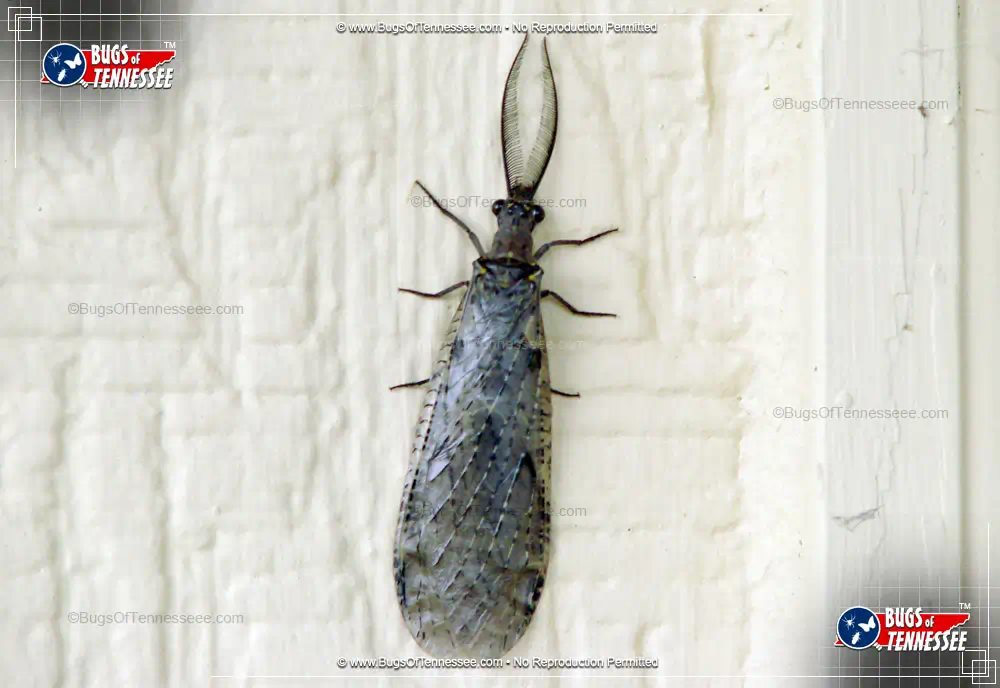Insect Order (Megaloptera)
Taxonomy
Other Names: "Summer Fishfly"
The Taxonomic Breakdown is the scientific way to categorize a partocular insect species from its largest group (Animalia) to its smallest (variable). The Genus and Species categorizations taken together make up the species' scientific name shown above, in this case Chauliodes pectinicornis.
Kingdom: Animalia
Phylum: Arthropoda
Class: Insecta
Order: Megaloptera
Family: Corydalidae
Genus: Chauliodes
Species: pectinicornis
Characteristics
Antenna: Antenna are noticeably apparent on this insect.
Biting: This insect is known to bite. Exercise caution.
Caution: Caution should be exercised around this insect.
Harmful: Known to be harmful in one way or another.
Outdoors: Typically found across the great outdoors.
Six-Legged: Six legs are common to this insect.
Winged: Has wings to hop or fly over distance.
Description
The Fishfly is also known by these other names:
Summer Fishfly
The Fishfly has been identified by site users by the following descriptors:
biting harmful antenna wings winged flying outdoors six-legged antenna transparent grey gray black large brown
Sighting Guide
The general likelihood of encountering this insect based on a given month of the year in the state of Tennessee. Generally, the best sighting months are June through August with peak occurring in July.
Size
Below is a representation of the 'smallest-small' and 'largest-large' sizes commonly associated with the Fishfly. Due to monitor differences, sizes may not be exact on your particular screen. Conversions to millimeters are provided for convenience.
Lowest-Low:
1.18 inches
(30 mm)
Highest-High:
1.97 inches
(50 mm)
Diet
It has a typical diet of the following: insect larva.
Identifying Colors
Below you will find the colors most commonly associated with the Fishfly. Both Primary and Secondary colors are represented in the showcase. Due to monitor differences, colors may not be exact representations.
Tennessee County Reach
The Fishfly can be found in the following Tennessee counties:
Anderson; Bedford; Benton; Bledsoe; Blount; Bradley; Campbell; Cannon; Carroll; Carter; Cheatham; Chester; Claiborne; Clay; Cocke; Coffee; Crockett; Cumberland; Davidson; De Kalb; Decatur; Dickson; Dyer; Fayette; Fentress; Franklin; Gibson; Giles; Grainger; Greene; Grundy; Hamblen; Hamilton; Hancock; Hardeman; Hardin; Hawkins; Haywood; Henderson; Henry; Hickman; Houston; Humphreys; Jackson; Jefferson; Johnson; Knox; Lake; Lauderdale; Lawrence; Lewis; Lincoln; Loudon; Macon; Madison; Marion; Marshall; Maury; McMinn; McNairy; Meigs; Monroe; Montgomery; Moore; Morgan; Obion; Overton; Perry; Pickett; Polk; Putnam; Rhea; Roane; Robertson; Rutherford; Scott; Sequatchie; Sevier; Shelby; Smith; Stewart; Sullivan; Sumner; Tipton; Trousdale; Unicoi; Union; Van Buren; Warren; Washington; Wayne; Weakley; White; Williamson; Wilson
Fishfly Picture (1)
1 of 1

Image of a Fishfly insect at rest showing detail.; Credit: Tony V. of Chicago, IL, USA.
This image is original to
www.InsectIdentification.org; Used with Permission.
